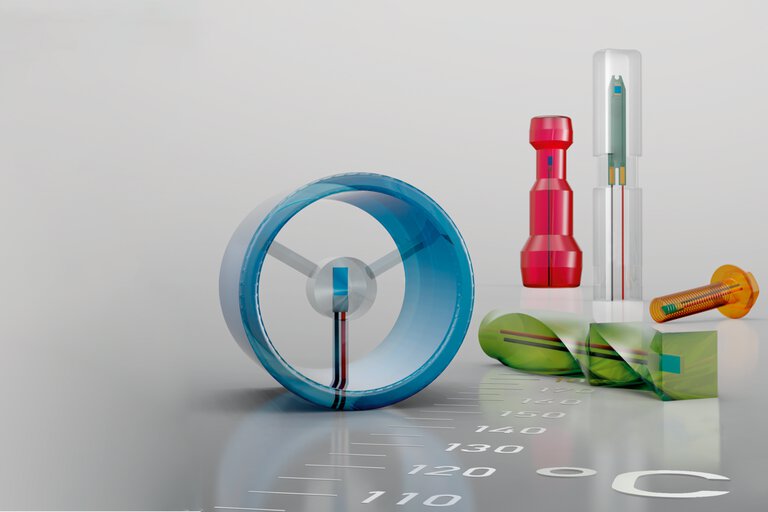

Transformer temperature sensors - types
Transformer temperature must be precisely monitored to prevent failures. From the entry you will learn, among other things, what is the maximum permissible temperature of the transformer and which transformer sensor to choose depending on the requirements of the application. Check it out!
Transformer temperature – why is it important to monitor it?
Transformers, like other devices that use electricity in their operation, give off heat as a by-product. This causes the temperature inside it to rise.
If it exceeds the design limits, it shortens the life of the transformer. Increased temperature is one of the main causes of most failures of these devices.
Types of power transformers
Power transformers are divided into two basic types: oil-filled and dry-type.
Oil transformers
The windings and core of an oil transformer are immersed in a tank of oil. This liquid is designed to cool and insulate the components of the device. Oil transformers do a better job of dissipating heat.
Temperature sensors in oil transformers measure the temperature of the oil directly, and then correct this value to estimate the temperature of the hot point of the winding.
Dry transformers
A dry-type transformer has the windings in an air or resin encapsulation. They are used to handle smaller capacities.
Temperature sensors in dry transformers directly measure the temperature of the hot point of the winding. They can be installed above the unit or in one or more low-voltage windings.

Power transformers are divided into two basic types: oil-filled and dry-type
Bimetallic thermometers with contact connection
Indicator bimetallic thermometers with a stainless steel shield will work well for oil transformers. They feature a dial with clearly readable pointers. The black indicates the current temperature, and the red towing pointer stays at the location of the highest temperature in the operating history until it is manually reset. This arrangement provides diagnostic capability. They also have a dial for setting the setpoint, when exceeded, an alarm will sound.
Bimetallic transformer sensors - types
Bimetallic thermometers come in two types of design:
- with a capillary - the temperature probe is placed in a sheath and connected by a capillary tube to the dial.
- with a thermometer sleeve - they are usually mounted directly in the transformer tank. The temperature probe is inserted into the sleeve on the tank wall at the mounting location.
Operating temperature of a bimetallic thermometer
When choosing the right sensor, also take into account the supported temperature range. We offer two types of temperature ranges for bimetallic thermometers:

JUMO dial thermometer

JUMO contact thermometer
Electrostatic discharge resistant temperature sensor for transformers
In dry-type transformers, the use of traditional temperature sensors made of metal involves higher costs, since these devices must be installed in an insulating layer.
A cost-effective alternative is the JUMO plastoSENS N01 plastic transformer sensor, dedicated to this type of application. Compared to conventional temperature sensors, it is more resistant to electrical discharges - it has AC 3.5 kV electrical insulation. When a flash occurs, PlastoSENS T01 sensors will not complete it.
If such a high load capacity is not required for your application, an economical solution will be a plug-in resistance temperature sensor with a connecting cable.

The optimal solution for transformers is a sensor resistant to electrostatic discharge, such as JUMO plastoSENS T01
